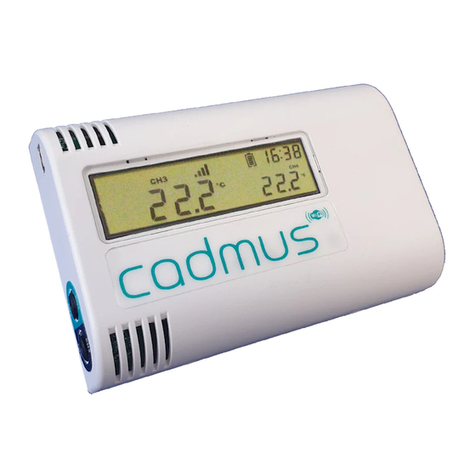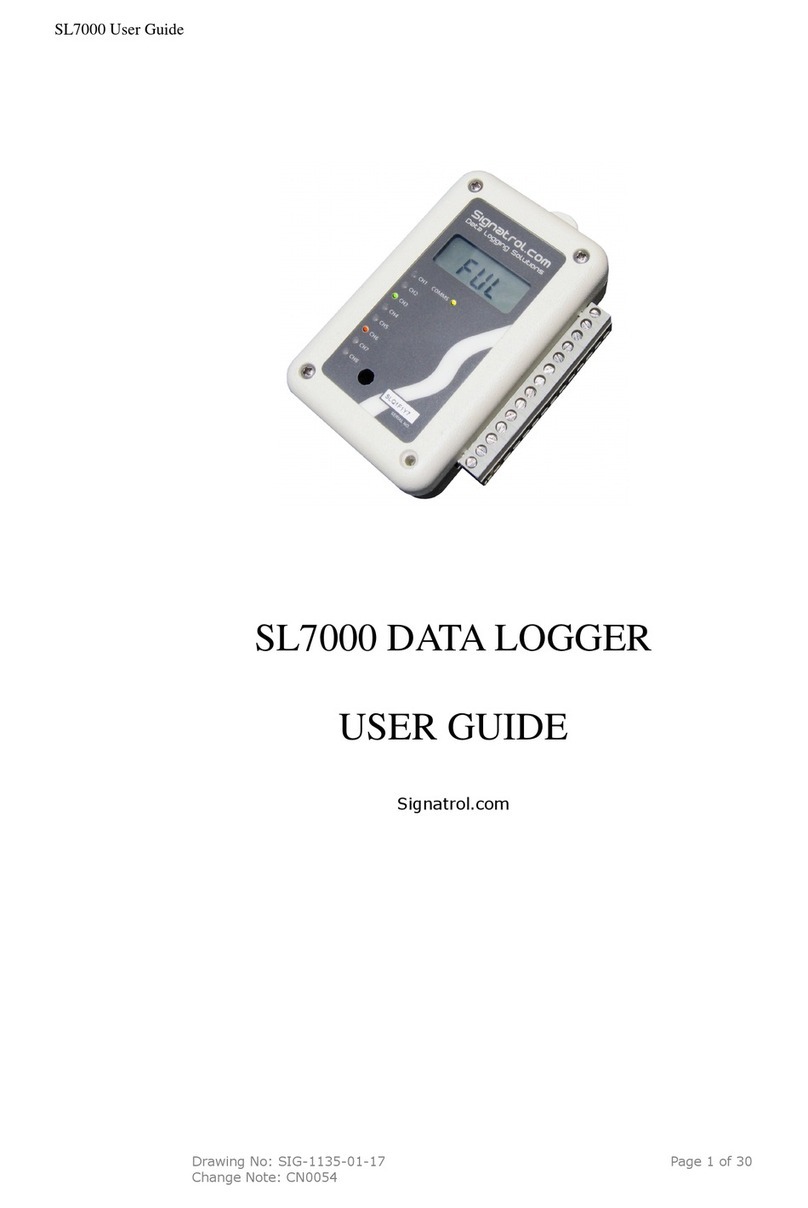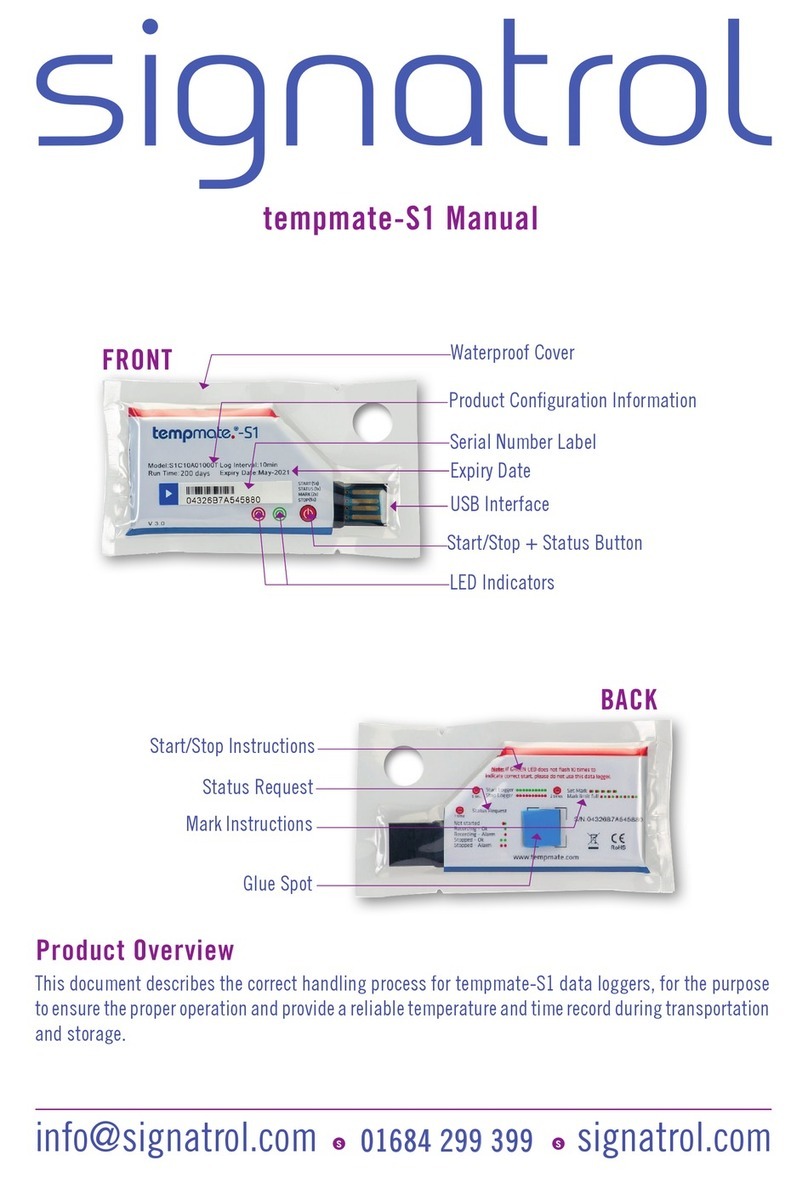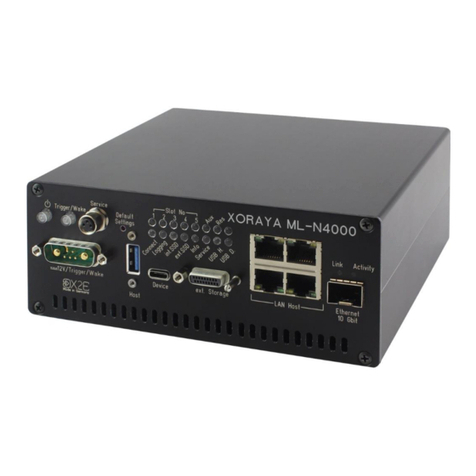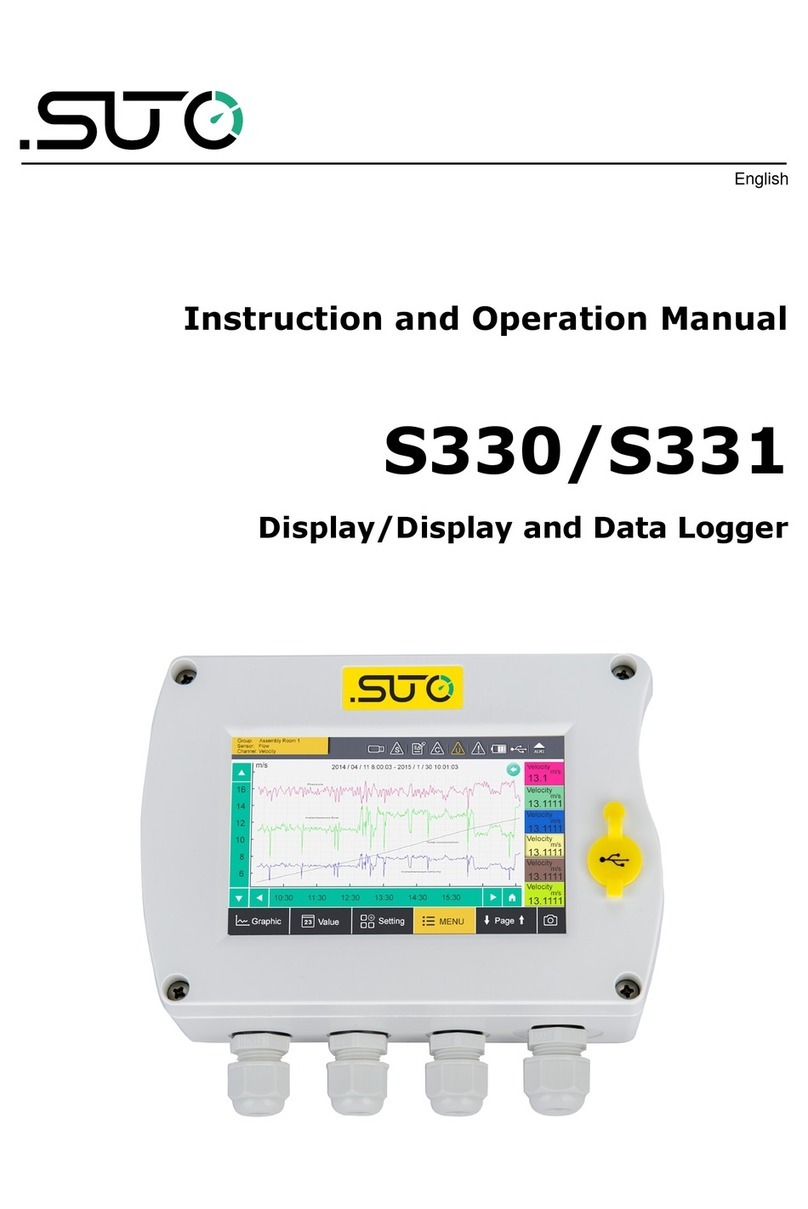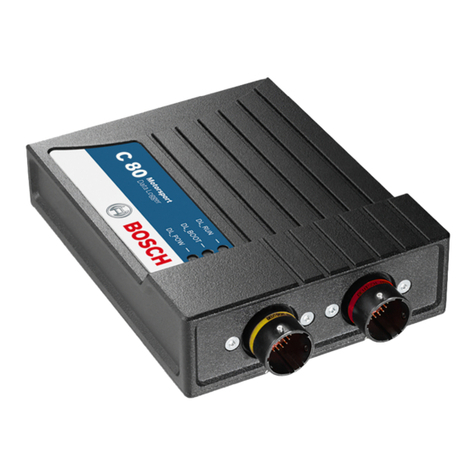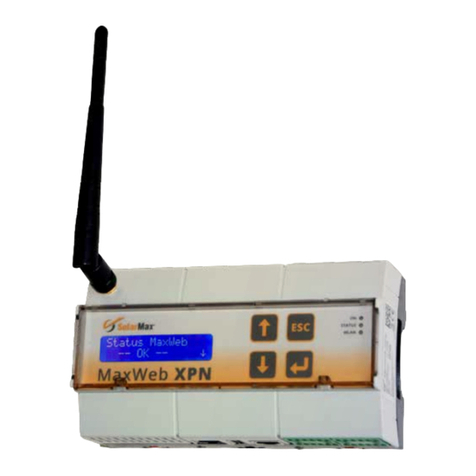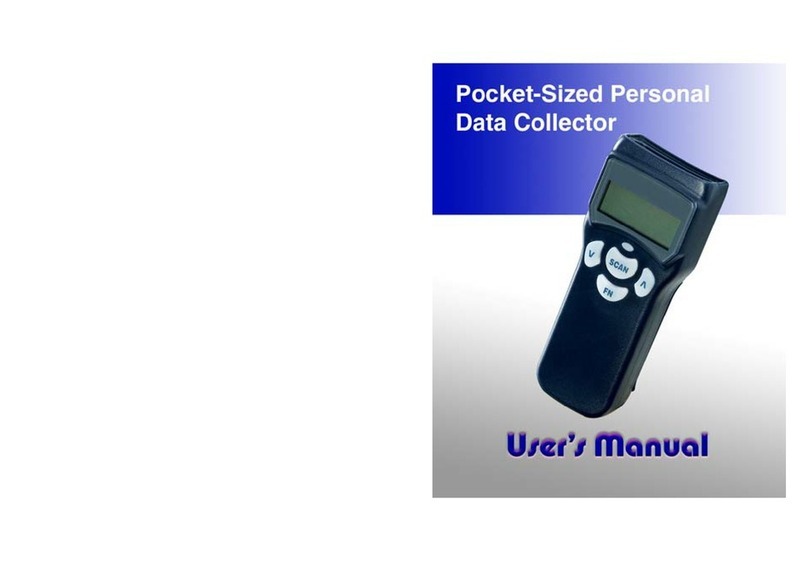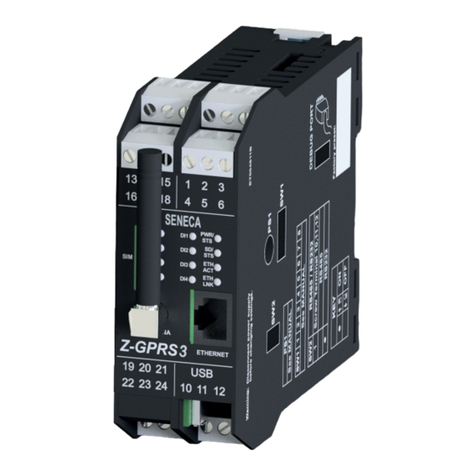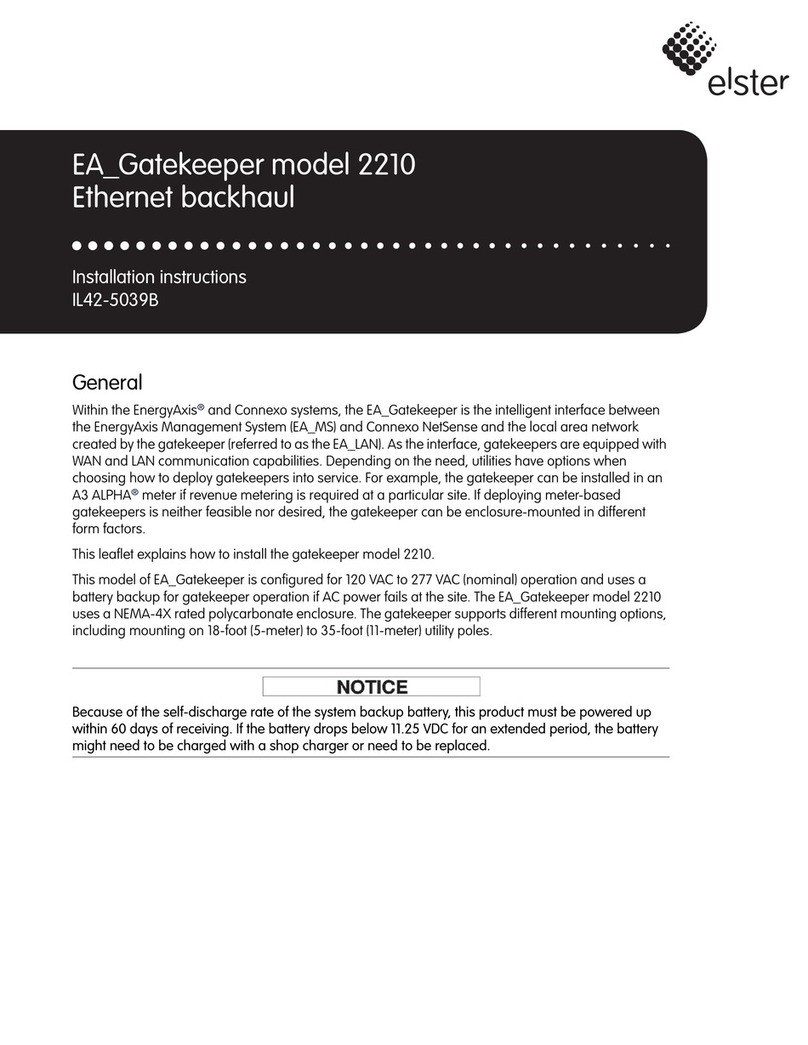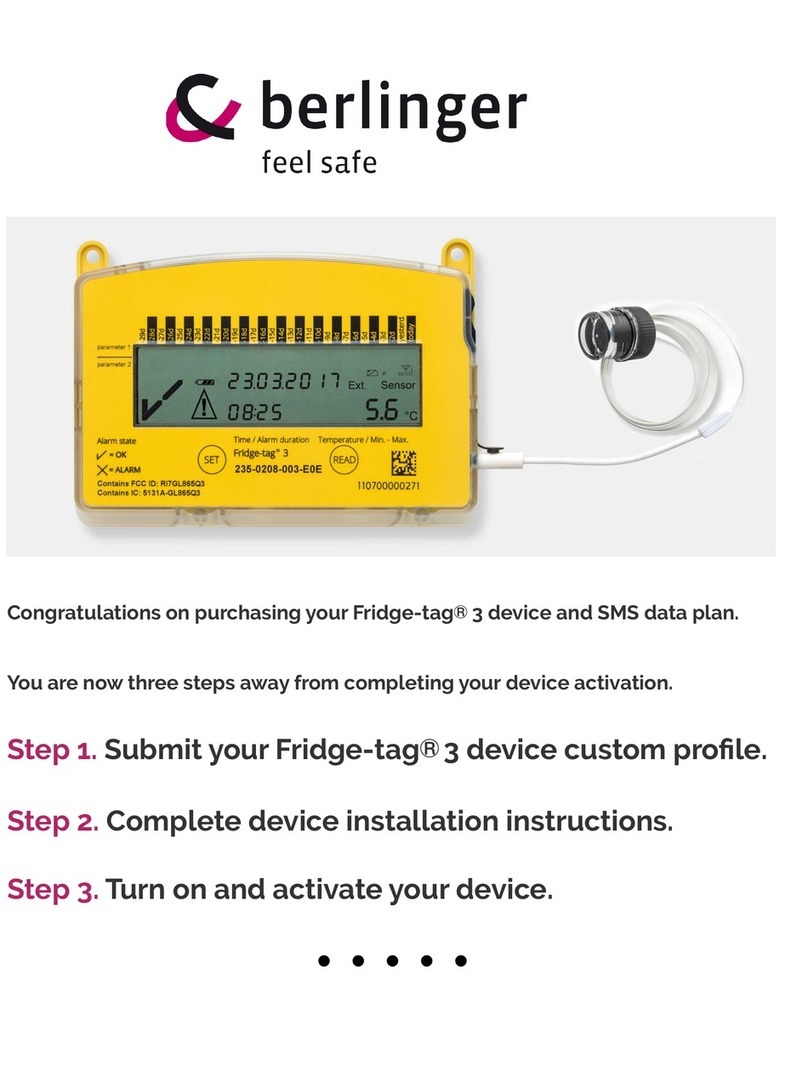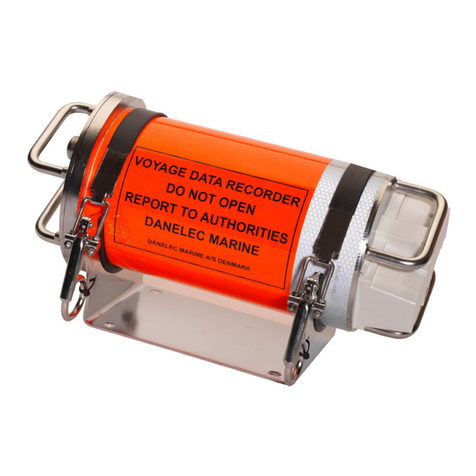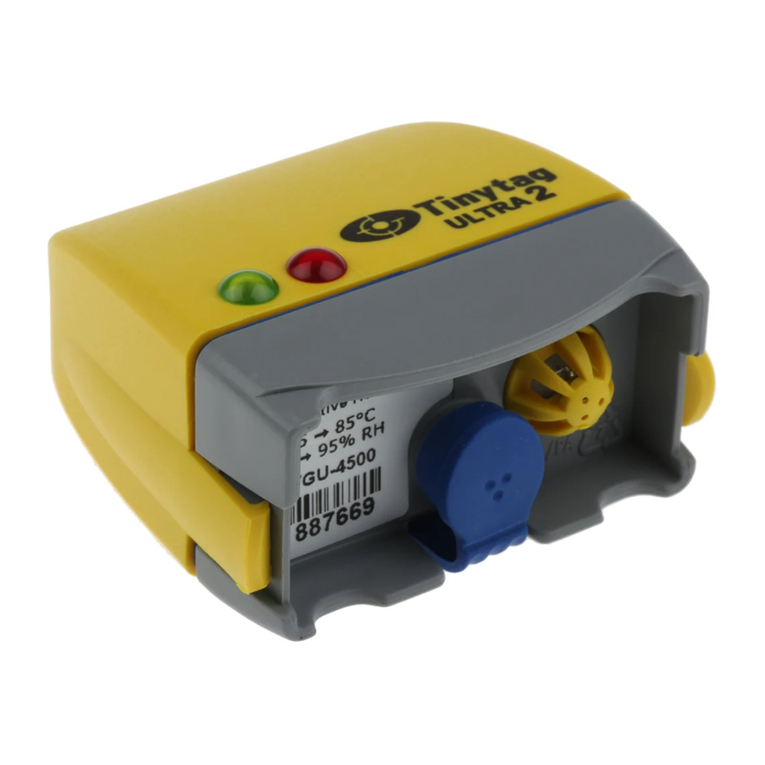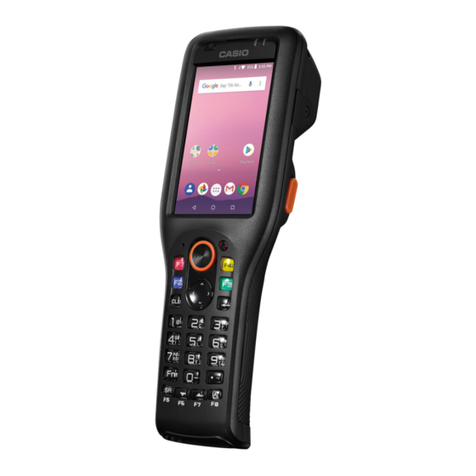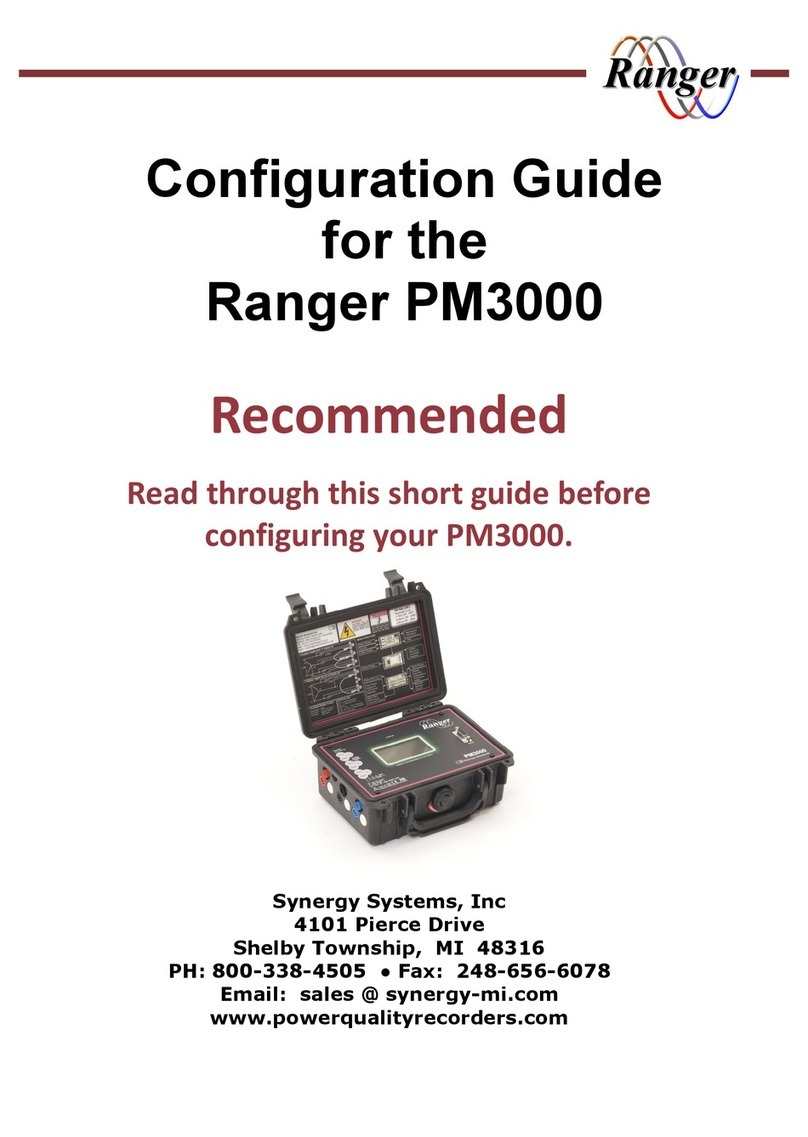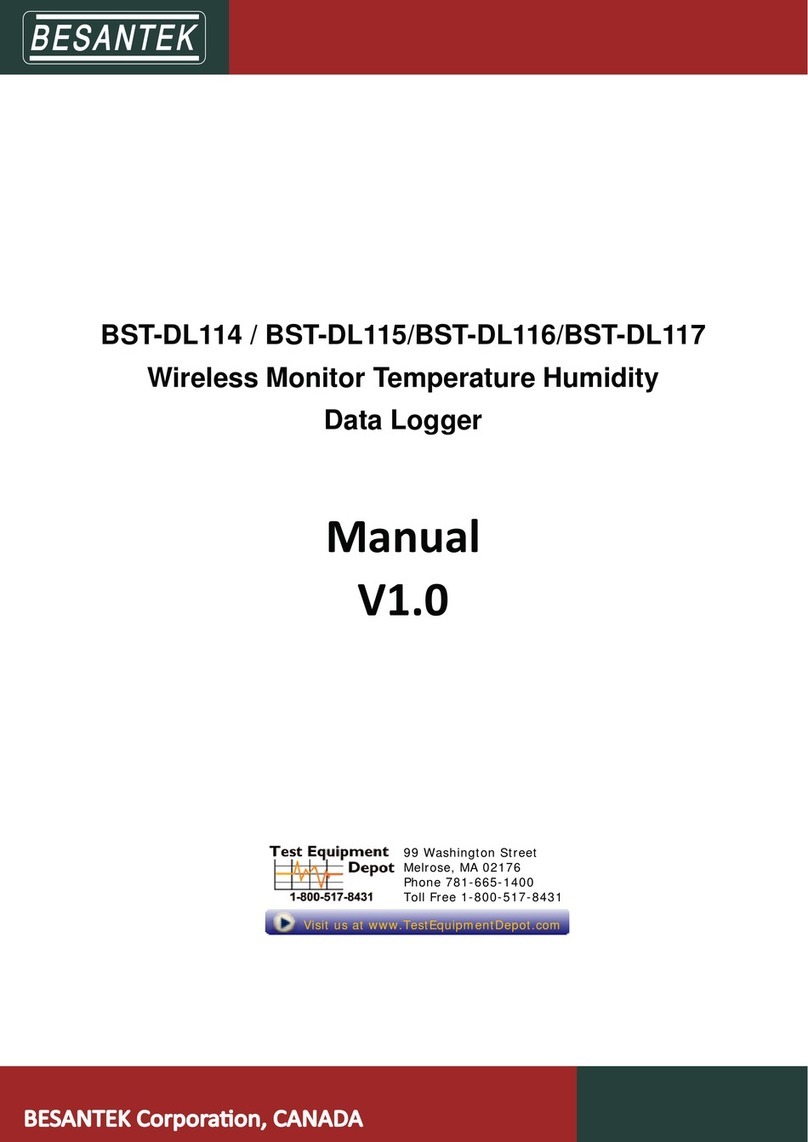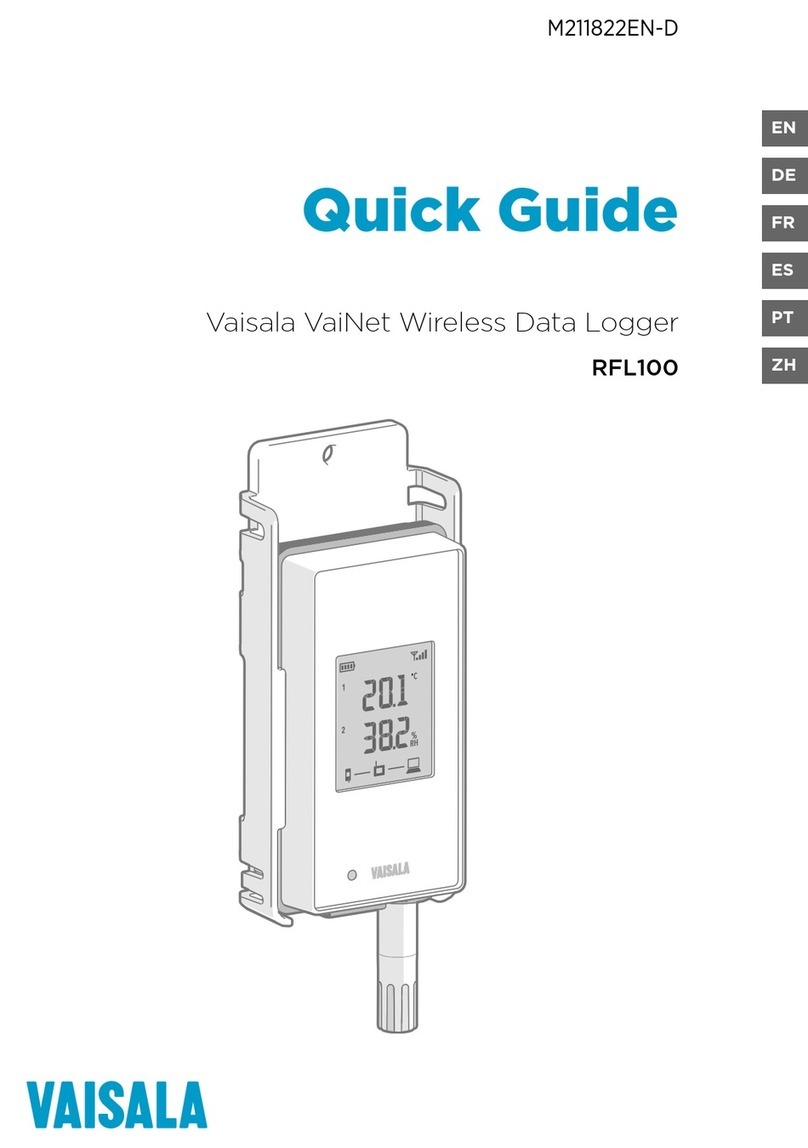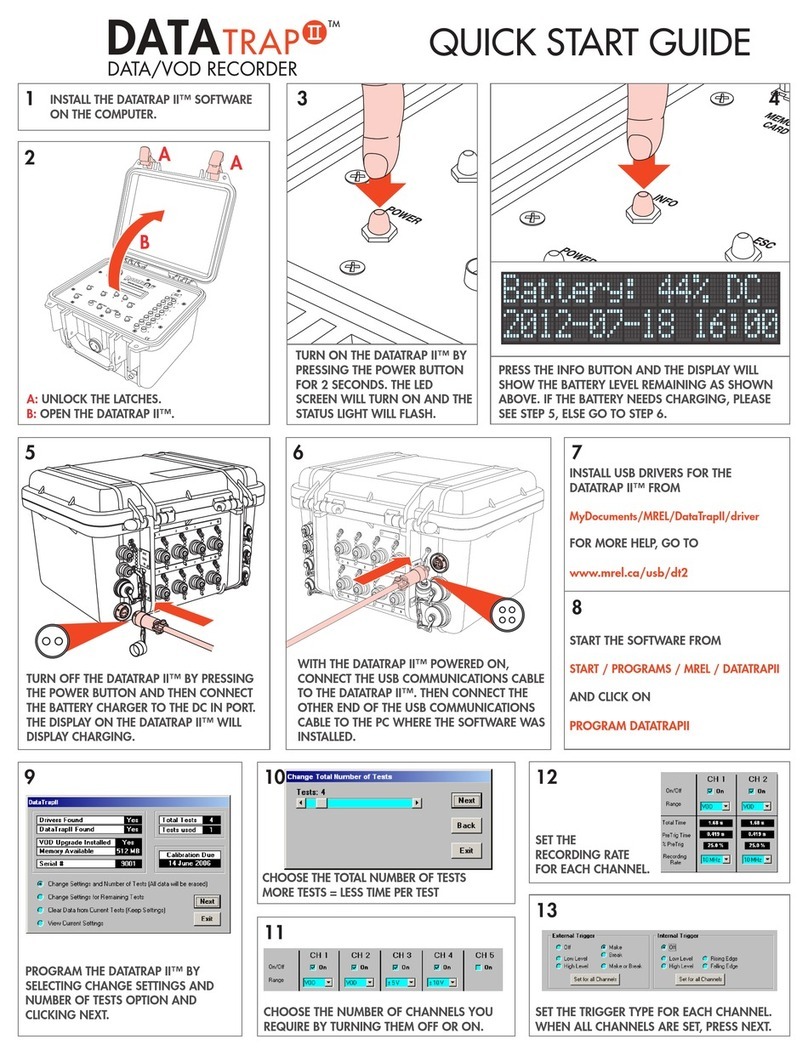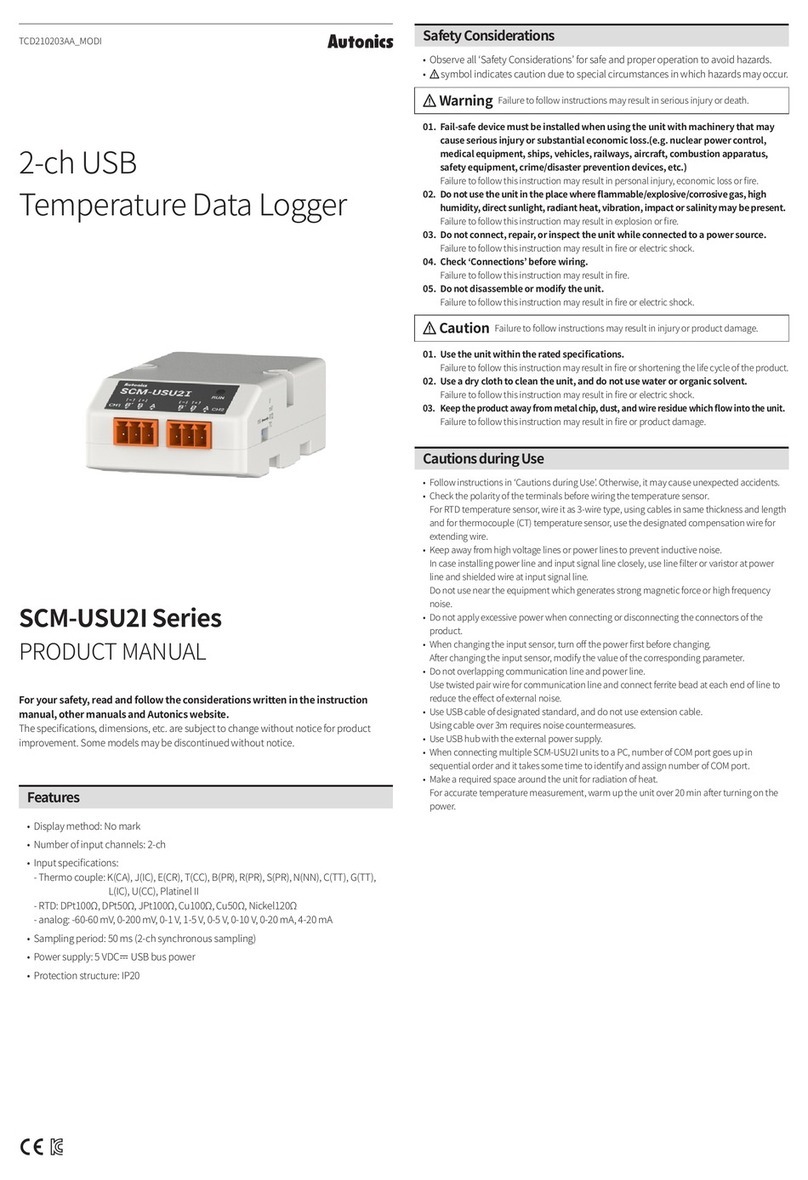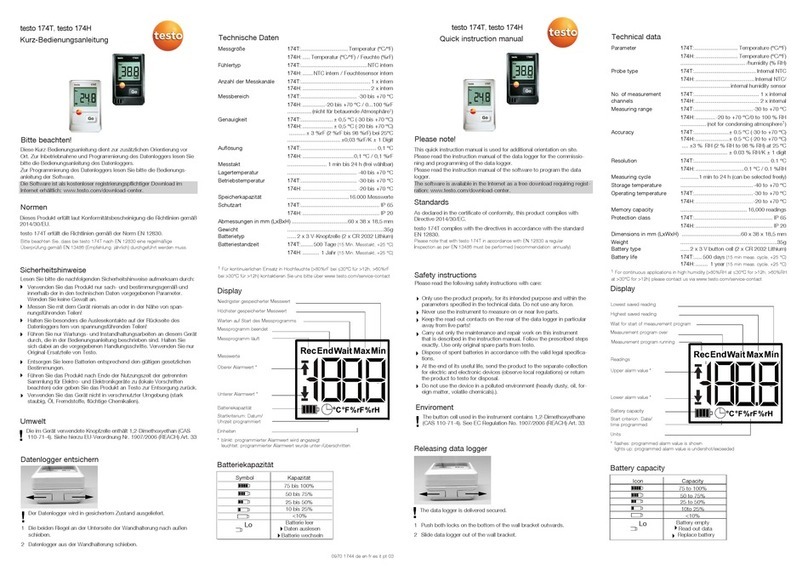Signatrol spYdaq User manual

Reference : SIG-1227-01-07 Change Note : CN0112
spYdaq Hardware Manual Page 1of 36
spYdaq Hardware
Manual.

Reference : SIG-1227-01-07 Change Note : CN0112
spYdaq Hardware Manual Page 2of 36
Contents
Contents.................................................................................................................... 2
1Document History.............................................................................................. 4
2Introduction........................................................................................................ 5
3Receiving............................................................................................................ 5
3.1
Transmitters.......................................................................................................... 5
3.2
Base-station .......................................................................................................... 5
3.3
Flow Chart ............................................................................................................. 6
4Transmitter Set-up............................................................................................. 7
4.1
Setting the device address................................................................................... 7
4.2
Setting the Channel Frequency ........................................................................... 8
4.3
Setting the Transmission Rate............................................................................. 9
The transmission rate determines how often the transmitter takes a measurement
reading and transmits it to the base-station. Most application run on a 10minute
transmit rate which give a battery life in excess of 7 years. Shorter transmit rates
significantly reduce battery life. ..................................................................................... 9
4.4
Selecting an Appropriate Sensor......................................................................... 9
4.5
Connecting the sensor ....................................................................................... 10
4.6
Positioning the Transmitters.............................................................................. 11
5PC Software...................................................................................................... 11
5.1
General ................................................................................................................ 11
5.2
Installing the spY-config software..................................................................... 11
6Modbus Masters .............................................................................................. 11
7The Base-station.............................................................................................. 12
7.1
Connecting the Base-station.............................................................................. 12
7.2
Optional Auxiliary Power Supply....................................................................... 13
7.3
Wiring the Alarm Connector............................................................................... 14
7.4
Configuration the Base-station.......................................................................... 15
First Use ........................................................................................................................................16
Find Base-station ..........................................................................................................................17

Reference : SIG-1227-01-07 Change Note : CN0112
spYdaq Hardware Manual Page 3of 36
Synchronise Clock ........................................................................................................................ 17
Configure.......................................................................................................................................18
Top Left-System Information......................................................................................................... 18
Bottom Left-General Settings........................................................................................................18
Temperature Units ....................................................................................................................18
Calibration Interval ....................................................................................................................18
Frequency Channel...................................................................................................................19
Menu Type ................................................................................................................................19
Top Right-Alarm Parameters ........................................................................................................19
System Descriptor.....................................................................................................................19
Top Right – Alarm Settings ...........................................................................................................19
Alarm Latching ..........................................................................................................................19
Audible Annunciation ................................................................................................................19
Transmitter late after .................................................................................................................19
Handle late as ...........................................................................................................................19
Handle Low Bat as ....................................................................................................................20
Bottom Right-Communications Parameters..................................................................................20
IEEE Format..............................................................................................................................20
Security .........................................................................................................................................21
Diagnostics....................................................................................................................................22
Basic..........................................................................................................................................22
Advanced ..................................................................................................................................22
Transmitter Configuration..............................................................................................................24
General......................................................................................................................................24
Internal Temperature.................................................................................................................24
Humidity ....................................................................................................................................25
Universal Input ..........................................................................................................................25
Antenna Diversity ..........................................................................................................................25
7.5
Base-Station Controls ........................................................................................ 25
7.6
Base-Station Runtime Screens .......................................................................... 26
Basic Menu....................................................................................................................................26
8MODBUS RTU Registers ................................................................................. 28
9Trouble Shooting ............................................................................................. 29
10 Specifications ............................................................................................... 31
10.1
spYdaq Radio Transmitters............................................................................ 31
General..........................................................................................................................................31
10.2
Basestation...................................................................................................... 32
General..........................................................................................................................................32
11 Signal Strength............................................................................................. 33
12 Glossary of Terms........................................................................................ 34
13 System Notes................................................................................................ 35
14 Channel Mapping Template......................................................................... 36

Reference : SIG-1227-01-07 Change Note : CN0112
spYdaq Hardware Manual Page 4of 36
1 Document History.
Version Comments
SIG-1227-01-02 Initial Release.
SIG-1227-01-03 Released 27 September 2011
Reading and Alarm block information added.
SIG-1227-01-04 Released 30 November 2011
Added information on Signal Strength
Corrected Signal strength table in section 9,
Basic Diagnostics.
SIG-1227-01-05 Released 08 August 2013
•Add 4 channel information
•Swap switch tables around to LSB first.
SIG-1227-01-06 Added section 11 (Signal Strength)
SIG-1227-01-07 Release 07/06/2017
Changed made for Mk2 Transmitter

Reference : SIG-1227-01-07 Change Note : CN0112
spYdaq Hardware Manual Page 5of 36
2 Introduction
Congratulations, you have just purchased an advanced radio data logging system. The
following guide takes you through the setting up procedure to enable you to get your
system up and running.
The system comprises of a number of radio transmitters, each with their own address,
which measure various parameters and transmit them to a base station where they are
received, checked for validity and alarms. The parameters are displayed on the local
LCD display and passed either via a serial MODBUS connection to a PC running
appropriate software, or via the mobile phone network (GPRS) to a host website.
There are two frequency channels so that up to two systems can operate side by side.
This manual is only concerned with the MODBUS version.
3 Receiving
Check the box for obvious signs of damage. Is the outer box appears damaged please
do not accept delivery.
Assuming that the system has arrived in good condition then carefully unpack the various
items and check that they are what were ordered.
3.1 Transmitters
If they have been ordered complete with sensors then the sensors should already be
connected and so all that is necessary is to set the address, select the frequency
channel and connect the batteries.
3.2 Base-station
The base-station comes with two standard aerials, a serial interface cable, a USB
interface cable and a power supply with interchangeable plugs. It is necessary to
connect the cables and pre-configure the base-station to enable it to work with the
transmitters

Reference : SIG-1227-01-07 Change Note : CN0112
spYdaq Hardware Manual Page 6of 36
3.3 Flow Chart
Unpack & Check
Contents
Install the
spY-Config
software.
Check the sensors
are attached
correctl
Turn ON the
transmitter using the
ON/OFF Switch
Connect USB cable to
transmitter and check
configuration using
spYconfig
Connect all cables to
Basestation
Configure
Base-station using
spY-Config Software
Install
spYmonitor-Local
Configure data-base
using
spYmonitor-Config
Ensure spYmonitor
Collector is running,
and autostarts when
PC is rebooted.

Reference : SIG-1227-01-07 Change Note : CN0112
spYdaq Hardware Manual Page 7of 36
4 Transmitter Set-up
4.1 Setting the device address
Each Base-station can accommodate up to 16 transmitters and each
transmitter can have up to three channels. Temperature, Humidit and
Universal, providing a theoretical maximum of 48 measured points per
s stem. All transmitters use the same PCB but not all of the transmitters
allow access to all three channels. Consult the individual transmitter
specifications for details.
Before setting the device addresses it is advisable to complete the Channel
Map. Each transmitter is then assigned to a particular area and function. Store the
Channel Map is a safe place for future reference.
Below is a screen shot of the transmitter configuration screen in the spY-
Config application (V1.0.22 or higher required).
Note: Each transmitter must have its own unique address or conflicts will arise
giving false readings. Transmitters must be enabled in the Basestation using the
spYconfig software. Signals arriving at the Basestation which have not been
enabled within the Base-station configuration will be ignored.

Reference : SIG-1227-01-07 Change Note : CN0112
spYdaq Hardware Manual Page 8of 36
4.2 Setting the Channel Frequency
Each transmitter can operate on one of four different licence free frequencies. The
channel is selected using the transmitter USB connection and changing the setting
under RF Output>Channel.
Standard Transmitter.
Transmitters with a SPYDAQ-100x prefix.
Channel 433 Band
A 433.55 MHz
B 434.29 MHz
C 433.25 MHz
D 433.92 MHz
Special Order Transmitters.
Transmitters with a SPYDAQ-110x prefix.
Channel 868 Band
A 866.00 MHz
B 867.00 MHz
C 866.33 MHz
D 866.67 MHz
Transmitters with a SPYDAQ-120x prefix.
Channel 915 Band
A 914.50 MHz
B 915.50 MHz
C 922.00 MHz
D 923.00 MHz
Note: whatever frequency is selected for transmission, ALL TRANSMITTERS
MUST BE SET TO THE SAME FREQUENCY and THIS MUST MATCH THE
FREQUENCY SELECTED IN THE BASE-STATION. If the user is using a SPYDAQ
HPR (High Power Repeater) the transmitter frequency channel may differ to the
Base-Station channel due to the repeaters operation.

Reference : SIG-1227-01-07 Change Note : CN0112
spYdaq Hardware Manual Page 9of 36
4.3 Setting the Transmission Rate
The transmission rate determines how often the transmitter takes a
measurement reading and transmits it to the base-station. Most application run
on a 10minute transmit rate which give a battery life in excess of 7 years.
Shorter transmit rates significantly reduce battery life.
Transmit Rates 20 Second*60 Minute 10 Minutes
(default)
30 Minutes
*This mode to be used for setup and commissioning only.
The transmit rate must be the same as the rate set up in the Basestation. Setting
different transmit rates on the transmitter compared to the Base-station will
result in a mis-match error and late alarms/warning.
4.4 Selecting an Appropriate Sensor
Where the transmitter is designed to accept a ‘Universal’ input, it can be one of a
number of different types which are selected as follows:
Available Settings
OFF (Channel Disabled)
RTD/Switch
Thermocouple
0-10 V
0-20 mA
RH Temp *
*RH Temp only available with transmitters fitted with Remote RH
Note: It is important that whatever sensor is selected here is matched by the
configuration of the Base-station. Transmitter signals arriving at the Basestation
with an incorrect configuration will be rejected (See Mismatch error). Please
note that many of the sensors supplied have been pre-configured and need no
further attention.

Reference : SIG-1227-01-07 Change Note : CN0112
spYdaq Hardware Manual Page 10 of 36
4.5 Connecting the sensor
Having selected an appropriate sensor it then needs to be wired into the PCB as
follows:
Note 1.
4 to 20mA input has an internal impedance of approx 120ohms. The impedance stated
includes the resistance of a series current limiting PTC.
The maximum voltage drop across the spYdaq input is 3V @ 25mA.

Reference : SIG-1227-01-07 Change Note : CN0112
spYdaq Hardware Manual Page 11 of 36
4.6 Positioning the Transmitters
The performance of radio signals are notoriously difficult to predict due to obstacles,
reflections, interference etc. If there are known issues such as for instance a steel
bulkhead care should be taken in positioning the transmitters and the base-station to
ensure satisfactory transmission signal strength. Positioning of the Base-station aerials
can also have a marked effect on performance see Antenna Diversit .
In general transmitter should be mounted so that the antenna is vertically orientated
and at least 1 metre above ground level. If a particular transmitter is not producing
sufficient field strength then it may benefit from an alternative directional aerial or re-
positioning. It is for these reasons that, in all but the most simple and straightforward
installations, we would recommend a site survey prior to determining the final
positioning of all the transmitters. Contact the sales office for details.
5 PC Software
5.1 General
For Hardware configuration:
spY-config must be installed on a PC used to setup the spYdaq base-station via USB.
The configuration internal to the base-station must match the transmitter switch
configuration. The user can also setup alarm for each transmitter which will activate
the internal relay and beeper. Customer using spYmonitor has the option to set soft
alarms. Soft alarms can also be set to send emails and/or sms on alarm.
5.2 Installing the spY-config software
Insert the USB drive into your computer and locate the installation exe file.
6 Modbus Masters
The spYdaq base-station has a MODBUS RTU output which is compatible with a wide
range of software platforms, PLCs etc.
We have worked with a number of SCADA systems, including Integraxor, Specview and
Prodigy, but many other systems are available. For more information contact the sales
office.
Modbus is not available on all Base-stations. If you require Modbus make sure that it was
specified on the order. If in doubt, contact our support team.

Reference : SIG-1227-01-07 Change Note : CN0112
spYdaq Hardware Manual Page 12 of 36
7 The Base-station
The base-station receives the signals from the transmitters, checks them for Alarms and
Warnings. Annunciates any Alarms present and presents the data via MODBUS registers
and USB port. Whenever a signal is received, the appropriate LED flashes on the front
panel. If that channel is in alarm it will flash red else it will flash green.
7.1 Connecting the Base-station
Connect the Base-station to the USB port of a PC. Connect both antennas. Select the
appropriate plug type for the intended country and securely fix it to the power supply
module. Connect the power supply cable and plug the power supply into a suitable
mains outlet.

Reference : SIG-1227-01-07 Change Note : CN0112
spYdaq Hardware Manual Page 13 of 36
7.2 Optional Auxiliary Power Supply
The Base-station can be powered by an optional auxiliary power supply (APS), Part
Number: SPYPOWER-APS. The auxiliary power is powered by the standard
basestation power pack, but in the event of mains power loss, a fully charged unit will
keep the base-station alive until mains power is restored, up to a maximum of 4 days
(for a fully populated system). For more details contact the sales office.
Image of SPYPOWER-APS
Image showing SPYPOWER-APS
installed below base-station.
Image showing SPYPOWER-APS
Installed below base-station with
power connection linked.

Reference : SIG-1227-01-07 Change Note : CN0112
spYdaq Hardware Manual Page 14 of 36
7.3 Wiring the Alarm Connector
A Changeover relay is provided in the Basestation to connect to external devices, that
is energised when the power is on and the system has no alarms,.. The relay is
energised when the system is powered and has no alarm and de-energised when an
alarm is present of if the power fails.
WARNING: No not connect voltages in excess of 24V to the relay contacts.
The relay is available via a two part rear panel connector and there are three
connections labelled:
NC: Normally Closed (Power off)
C: Common
NO: Normally Open (Power off)
The Common or Wiper changes the connection according to the following table.
NC C NO
Power On No Alarm
Power On Alarm Present
Power Off
As can be seen from the table, the effect of a power failure is the same as when the
system encounters an alarm condition.

Reference : SIG-1227-01-07 Change Note : CN0112
spYdaq Hardware Manual Page 15 of 36
7.4 Configuration the Base-station
The Base-station must be set up to the parameters you require for your system. You
must tell the base-station how many transmitters are on the system and which
addresses they can be found at. You must also define the transmitter types so that if
the base-station sees any change to the transmitters, it will immediately recognise it
and show a ‘Mismatch’ error.
All these parameters are configured via the USB port by using a special programme
called spY-Config.
It is recommended that the transmitters are set up for a 20 second transmit rate so that
the configurations, and hence the correct system operation, can be verified relatively
quickly. After verifying that the system works as required, the transmitters, and the
Base-station configuration, should be changed to their operating mode of 10 Min
transmission rate.
Configuration of the Base-station is only normally required at the commissioning stage
of when there are hardware changes to the system.
Make sure that the Base-station is powered and the USB port connected, via the cable
provided to the PC where spY-Config is installed. Run spY-Config.
The following screen will appear:

Reference : SIG-1227-01-07 Change Note : CN0112
spYdaq Hardware Manual Page 16 of 36
First Use
The first time the system is used it will ask for a password.
This PASSWORD is between 6 and 12 characters and you should make a note of
what you have chosen and keep it in a safe place.
The PASSWORD will be required if you want to enable the security features
later.
After successful entering of the password, the following screen will be presented:
Then click on Base-station

Reference : SIG-1227-01-07 Change Note : CN0112
spYdaq Hardware Manual Page 17 of 36
Find Base-station
If only one base-station is connected they system will automatically detect it and no
further action is required. If more than one are being used then click on Find Base-
station and a list of available base-stations is presented. Click on the one that you wish
to configure
Synchronise Clock
Selecting this tab takes you to a ‘Synchronise Clock’ window where the time, date and
time zone etc held within the Base-station can be synchronised to the Time and Date
etc used on the PC.
Now close this screen.

Reference : SIG-1227-01-07 Change Note : CN0112
spYdaq Hardware Manual Page 18 of 36
Configure
This is where the basic system parameters of the Base-station are configured.
spY-Config will automatically read the previous configuration and present the above
screen.
The screen is divided into four panels as follows:
Top Left-System Information
This is a read only screen with information entered at time of manufacture. There are
no user configurable fields here.
Bottom Left-General Settings
Temperature Units
Here you can select Degrees Celsius, Fahrenheit or Kelvin
Calibration Interval
Here you set the calibration interval to 6, 12, 24 or 36 Months or Disabled. This is the
interval that triggers a calibration reminder on the Health Parameters. It is strongly
recommended that this interval remains at its default of 12 months to ensure accurate
readings.

Reference : SIG-1227-01-07 Change Note : CN0112
spYdaq Hardware Manual Page 19 of 36
Frequency Channel
Here you set the frequency channel to A,B,C and D.
Menu Type
This selects the number of different screens on the LCD display on the base-station.
Long includes many more screens that can be useful during commissioning. After
commissioning it is recommended that this is set to BASIC.
Top Right-Alarm Parameters
Here you set up the parameters associated with Alarms and Warnings.
System Descriptor
This is a customer editable 32 character string to identify the base-station.
Top Right – Alarm Settings
Alarm Latching
This selects whether or not an alarm latches or not when it occurs. This can be useful
to identify alarms that have occurred when no-one was around, say over a weekend. If
the alarm is latched it remains in alarm, even if the alarm has subsequently gone
away, until the alarm is reset either from the rear push-button or via the USB port by
sending a configuration or by writing to an appropriate MODBUS register. (Latched
alarms can be reset by writing to the alarm again or by pressing and holding the
pushbutton on the rear panel of the Base-station for 10 seconds.)
Audible Annunciation
This selects whether or not the inbuilt audible alarm sounds in the event of an alarm.
There are three modes, Off , continuous or Bleep.
Transmitter late after
This parameter defines when the system determines that a reading is late. It can be
after 1, 2, 3, 4 or 5 consecutive missed readings. Alternatively, if Never is selected
then the system will never flag missed readings. It is recommended that the Late After
is set to 3 then it will raise a warning after three consecutive readings have been
missed.
Note for Modbus users:
When a late alarm occurs the Modbus parameter data for that transmitter will be set to NaN (Not a
Number). If you wish the Modbus register to remain at the last received value, set Late to NEVER.
Handle late as
When there is a late reading as defined above the system can interpret this as either a
Warning or Alarm. The recommended mode is Alarm.

Reference : SIG-1227-01-07 Change Note : CN0112
spYdaq Hardware Manual Page 20 of 36
Handle Low Bat as
When a transmitter detects that its battery voltage is low and will need replacing soon
the system can interpret this as either a Warning or Alarm. The recommended mode is
Alarm.
Bottom Right-Communications Parameters.
Here you set the communication protocol parameters in order to effectively
communicate with your MODBUS master. The settings will be defined by the
MODBUS master.
IEEE Format
Process variable data such a temperature, humidity, pressure, etc is stored within the
base-station as an IEEE 754 number. When transferring the data to different systems
the word and byte position is very important, and this format is not set down by any
standard. Having in incorrect format may result in unrealistic values being recorded.
When using spYmonitor-Local via USB the format must be set to = “CDAB (WEB)”,
customer using the GPRS version of the base-station must set the format to = “ABCD
(MODEM)”.
After selecting the various parameters CLICK WRITE and close the screen.
Table of contents
Other Signatrol Data Logger manuals
